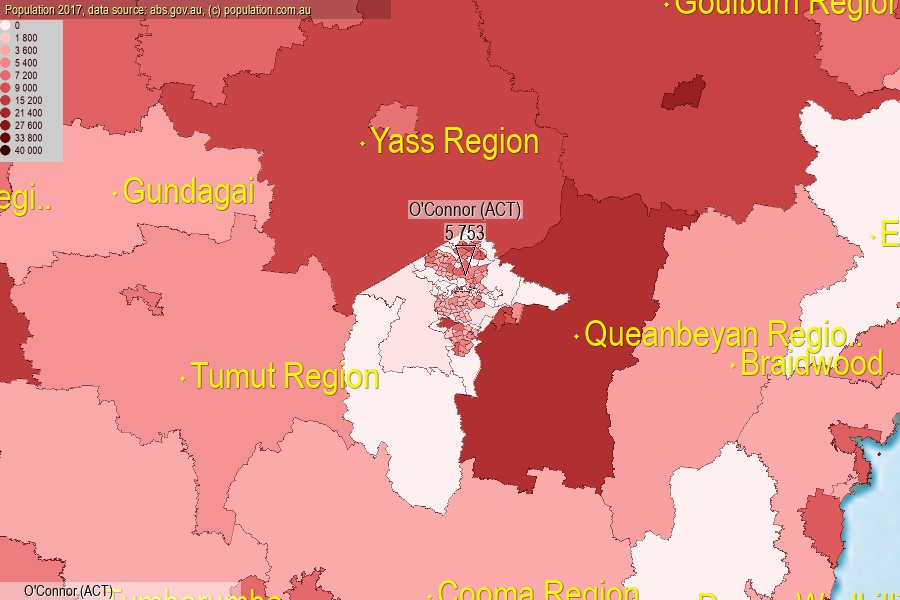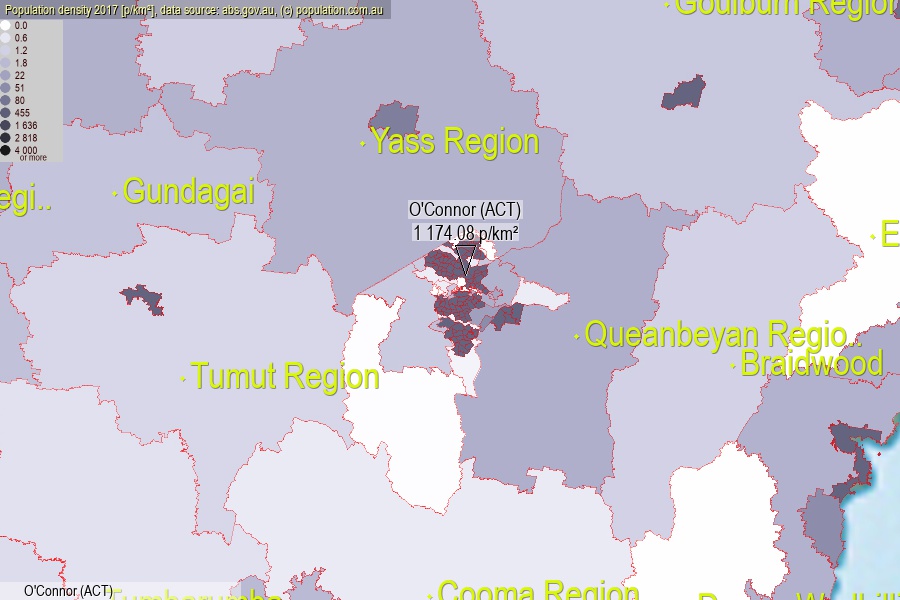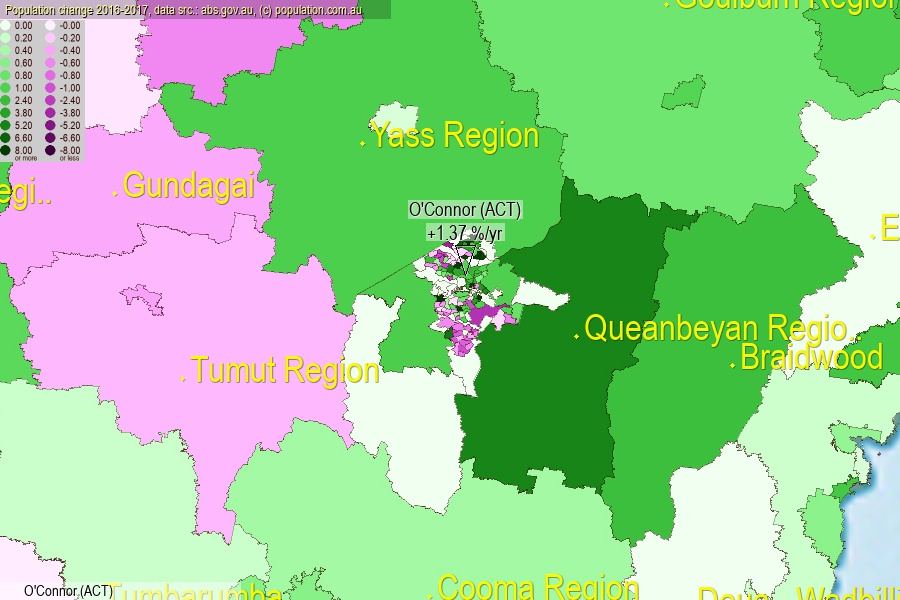 population.com.au
population.com.auLast official estimated population of O'Connor (ACT) (as Statistical Area Level 2) was 5 753 people (on 2017-06-30)[2]. This was 0.02% of total Australian population and 1.372% of ACT population. Area of O'Connor (ACT) is 4.90 km², in this year population density was 1 174.08 p/km² . If population growth rate would be same as in period 2016-2017 (+1.37%/yr), O'Connor (ACT) population in 2025 would be 6 417. [0]



Click to enlarge. O'Connor (ACT) is located in the center of the images.
Population [people], population density [p./km²] and population change [%/year] [2]
View borders » (new window) [4]
[1991-1992] +1.60 %/Yr.
[1992-1993] -0.55 %/Yr.
[1993-1994] -0.32 %/Yr.
[1994-1995] -1.33 %/Yr.
[1995-1996] -2.33 %/Yr.
[1996-1997] -1.53 %/Yr.
[1997-1998] -0.90 %/Yr.
[1998-1999] -0.80 %/Yr.
[1999-2000] +0.34 %/Yr.
[2000-2001] +0.83 %/Yr.
[2001-2002] +2.93 %/Yr.
[2002-2003] +2.33 %/Yr.
[2003-2004] +0.84 %/Yr.
[2004-2005] +1.66 %/Yr.
[2005-2006] +0.55 %/Yr.
[2006-2007] +2.44 %/Yr.
[2007-2008] +0.85 %/Yr.
[2008-2009] +0.88 %/Yr.
[2009-2010] +1.26 %/Yr.
[2010-2011] +0.51 %/Yr.
[2011-2012] +1.33 %/Yr.
[2012-2013] +0.45 %/Yr.
[2013-2014] +0.45 %/Yr.
[2014-2015] +0.45 %/Yr.
[2015-2016] +0.96 %/Yr.
[2016-2017] +1.37 %/Yr.
[0] Calculated with linear interpolation from officially estimated population
[1] Read more about SA2 and Australian Statistical Geography Standard (ASGS) on abs.gov.au
[2] Population data from Australian Bureau of Statistics (Population and density: 2017; change: 2016-2017)
[3] Digital Boundaries: Australian Statistical Geography Standard (ASGS) 2016.
[4] Border coordinates are simplifyed using Ramer-Douglas-Peucker algorithm.